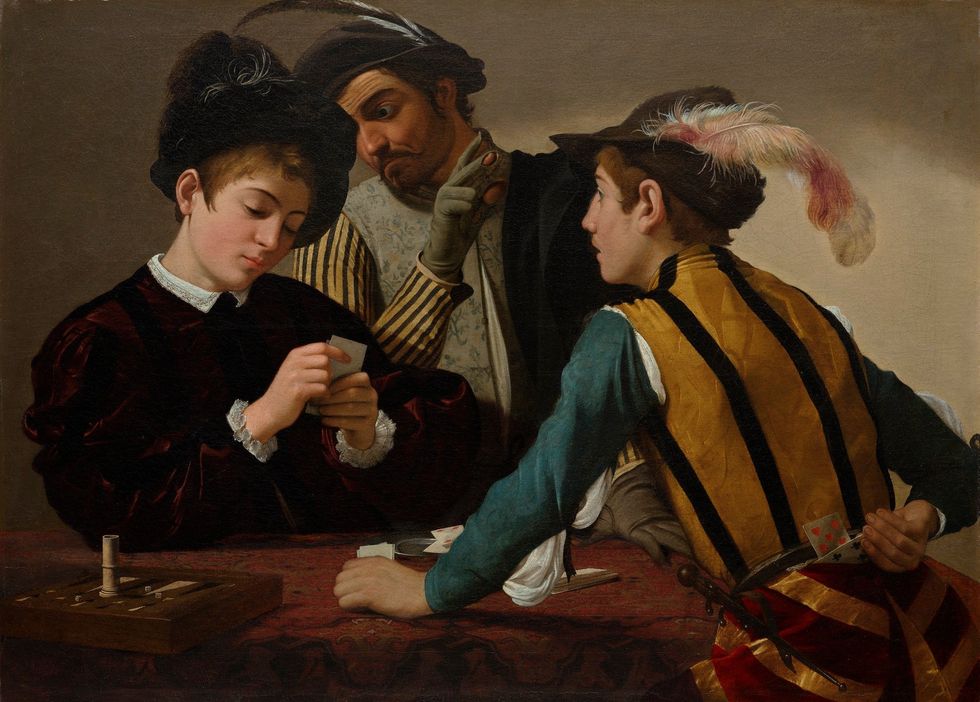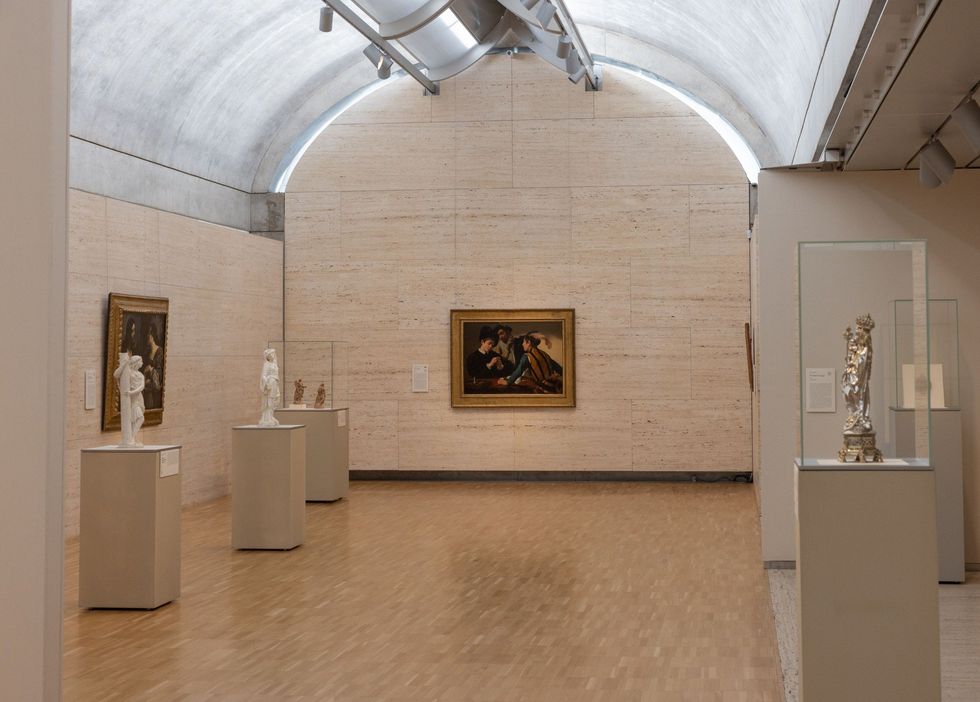Farewell For Now
Time's running out to see one of the Kimbell Art Museum's most popular paintings
One of the Kimbell Art Museum's most famous paintings is about to take a little vacation.
The Cardsharps by Michelangelo Merisi da Caravaggio, which is thought to have been painted around 1595, is going on loan to the Art Institute of Chicago for its upcoming exhibition "Among Friends and Rivals: Caravaggio in Rome," showing September 8-December 31, 2023.
From there, the masterpiece is headed to the Toledo Museum of Art for "The Brilliance of Caravaggio: Four Paintings in Focus" from January 20-April 14, 2024.
Fort Worth patrons only have until August 6 to view the painting, or will have to wait until late spring 2024 to see it again.
"This painting is one of the most beloved works of art in our collection and is one of the most exceptional works in Caravaggio’s oeuvre," writes the Kimbell on its Facebook page. "The attention to detail, dramatic lighting, and theatrical subjects are hallmarks of the renowned artist’s style. While we love to have The Cardsharps on view for our visitors to admire in person, we also find great value in lending art to our fellow cultural institutions. At any given time, the Kimbell has a number of works from our collection on loan to other museums around the world."
The post goes on to explain that special exhibitions allow museum visitors to experience a wide variety of artworks and deepen their understanding of art history, and that, "without friendly loans like this," the Kimbell wouldn’t be able to mount temporary exhibitions throughout the year.
"Reciprocity is certainly one of the factors the Kimbell considers when deciding whether to lend a work to another museum," the Kimbell's director, Eric Lee, tells CultureMap. "We would not able to organize our extraordinary exhibitions — with their many amazing loans from other museums — if the Kimbell did not in turn lend works from its collection to those other museums. But equally important to the deliberations on whether to lend is the seriousness of the exhibition for which a work is requested and the potential to learn from lending a work to a show. As for the Art Institute of Chicago and Toledo, we have a long history of partnerships with both institutions, including most recently 'The Language of Beauty in African Art,' which was organized by the Art Institute of Chicago and traveled only to the Kimbell."
One of Caravaggio's earliest paintings, The Cardsharps snagged the attention of the influential Cardinal Francesco Maria del Monte, who not only purchased it but also offered the artist quarters in his palace. Thus, Caravaggio was introduced to the elite stratum of Roman ecclesiastical society, which gave him his first significant opportunity to work on a large scale and for a public forum.
The Kimbell describes the painting as such:
In The Cardsharps, the players are engaged in a game of primero, a forerunner of poker. Engrossed in his cards at left is the dupe, unaware that the older cardsharp signals his accomplice with a raised, gloved hand (the fingertips exposed, better to feel marked cards). At right, the young cheat looks expectantly toward the boy and reaches behind his back to pull a hidden card from his breeches. Caravaggio has treated this subject not as a caricature of vice but in a novelistic way, in which the interaction of gesture and glance evokes the drama of deception and lost innocence in the most human of terms.
The Cardsharps kicked off a trend for paintings on nefarious card game scenes, including Georges de La Tour’s Cheat with the Ace of Clubs, also found at the Kimbell.
The Cardsharps was stamped on the back with the seal of Cardinal del Monte and inventoried among his possessions after his death in 1627. Its location had been unknown for some 90 years when it was rediscovered in 1987 in a European private collection.
The Kimbell acquired the painting that same year.
The popularity of The Cardsharps is evident in the response to the Kimbell's announcement. "Is this how it feels when your kid goes off to college? I'm so sad but so proud," writes one poster on Facebook. "When I go to the Kimbell I can study this painting for hours, the detail, composition, shading and color are beyond compare," writes another.
But it appears DFW art fans are in favor of the loan, with many echoing the sentiment of this poster: "So great that museums do such loans so we can see more original artwork from all over the world."



 Gun presented to Frank Sinatra. RIAC
Gun presented to Frank Sinatra. RIAC  "Princess Diana: Accredited Access," featuring photos of Anwar Hussein, ran January 17-April 6, 2025, at Arlington Museum of Art. Getty Images
"Princess Diana: Accredited Access," featuring photos of Anwar Hussein, ran January 17-April 6, 2025, at Arlington Museum of Art. Getty Images  The Cookies Chaos Milkshake is a winner. Photo courtesy of State Fair of Texas
The Cookies Chaos Milkshake is a winner. Photo courtesy of State Fair of Texas